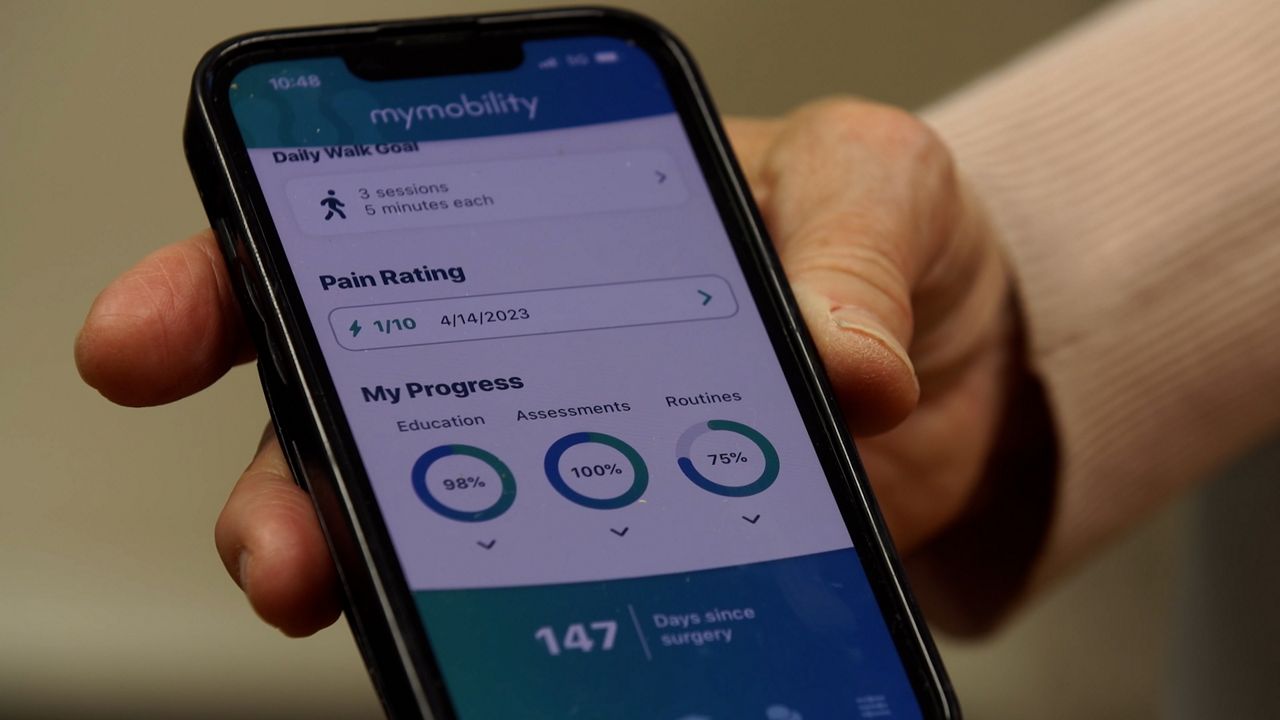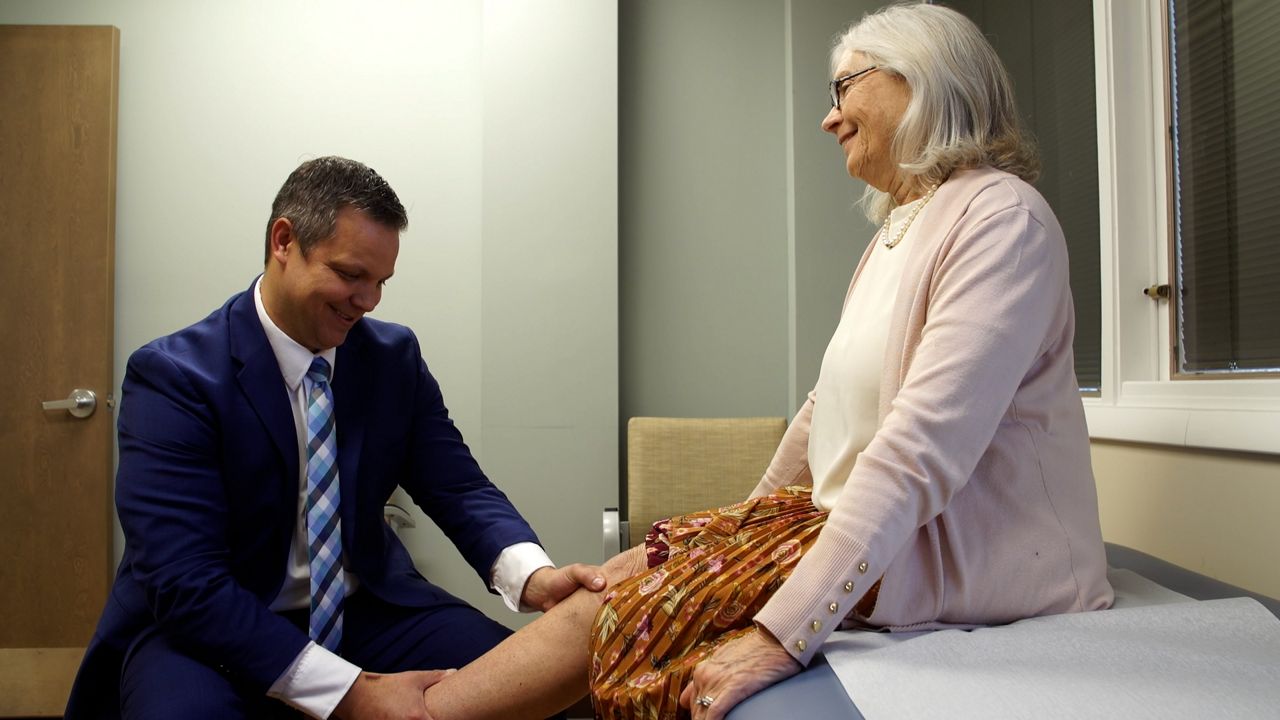We’ve got smartphones, smart TV’s, and now there are smart…knees? It may be the net step in total knee replacements. National Health Reporter Erin Billups takes a closer look.
“I’ve had problems with my knee, basically since the eighth grade,” said Dr. Barbara Girz, an obstetrician by trade.
Whether it’s running, playing tennis, doing yoga, reffing or treating patients, Girz has always been active. Now in her 70s, the pain in her knee, osteoarthritis, became too great to ignore.
“I limped,” said Girz. “I got to the critical level of Advil that one could take almost every single day. At night, sometimes I couldn’t sleep.”
But when Girz finally decided to get a total knee replacement, her orthopedic surgeon John Dundon suggested an additional piece of hardware- a sensor.
“It’s actually placed and implanted into the patient’s bone,” said Dundon, who is the arthroplasty chair at Morristown Medical Center in New Jersey.
While knee implants have improved drastically over the years, Dundon said the number of patients experiencing complications has barely budged. “When we look back at all the research in the studies, not all our patients do fine. You’re looking at about 15% of knee replacement patients who don’t do well, and we don’t know why.”

Dundon is one of several surgeons around the country testing out the technology created by two companies, called the Persona IQ Smart Knee system. Zimmer Biomet crafted the actual knee implant that replaces the damaged knee. Canary Medical is responsible for the sensor technology. Together, the system received FDA approval in Aug. 2021.
The implants wirelessly transmit data to clinicians on the range of motion, step count, walking speed and other gait metrics. Patients can also download an app that offers insights into how to recover better.
Dundon says they hope they will learn more about why some patients see a vast improvement in their mobility and others do not.
“Everybody thinks they’re getting tracked,” said Dundon. “They’re sitting there on their iPhone that is tracking them, telling me they don’t want someone to track them. So this isn’t a [location] tracking device. It’s an accelerometer, gyroscope, pedometer.”
He said patients also have the ability to remotely turn off the wireless transmitter.
Girz was recovering well after her surgery right before Thanksgiving, but then during her family’s Christmas celebrations her progress hit a snag.
“I felt like I was going backwards,” she said. “I had to go back using a walker some of the time. I mean, I was very uncomfortable.”
Girz brought it up with Dr. Dundon. “He showed me on the graph that things were going fine. And then it just took a dive and I thought, well, that validates what I was feeling.”
Taking care of her five kids and six grandchildren had taken a toll. The solution was to change her physical therapy regimen. They worked more on bending her knee, riding the bike.

From Girz’ data and others, scientists are already getting very useful information. Such as, not every implant should be put in the same way.
“The way I was trained to do a knee, it was very much the straight up and down approach. Use the mechanical axis, realign it. As we get more powerful data, the hope is that we’ll be able to say, well this patient, with this deformity is going to do a little bit better if we slightly rotate the implant this way And that’s what we’re starting to see,” said Dundon.
In-body sensor technology is already used to monitor glucose levels for people with diabetes and we will likely see it used more for different issues in the future. A spokesperson at Canary Medical tells Spectrum News the company is exploring partnerships for using their sensor technology in other parts of the body.
For Girz, she feels it’s helping her toward her best recovery - getting her closer to her goal of climbing Machu Picchu.
“I would say I’m not back to normal yet,” said Girz. “But getting there, I don’t think about my knee 24/7 and that’s very important.”



